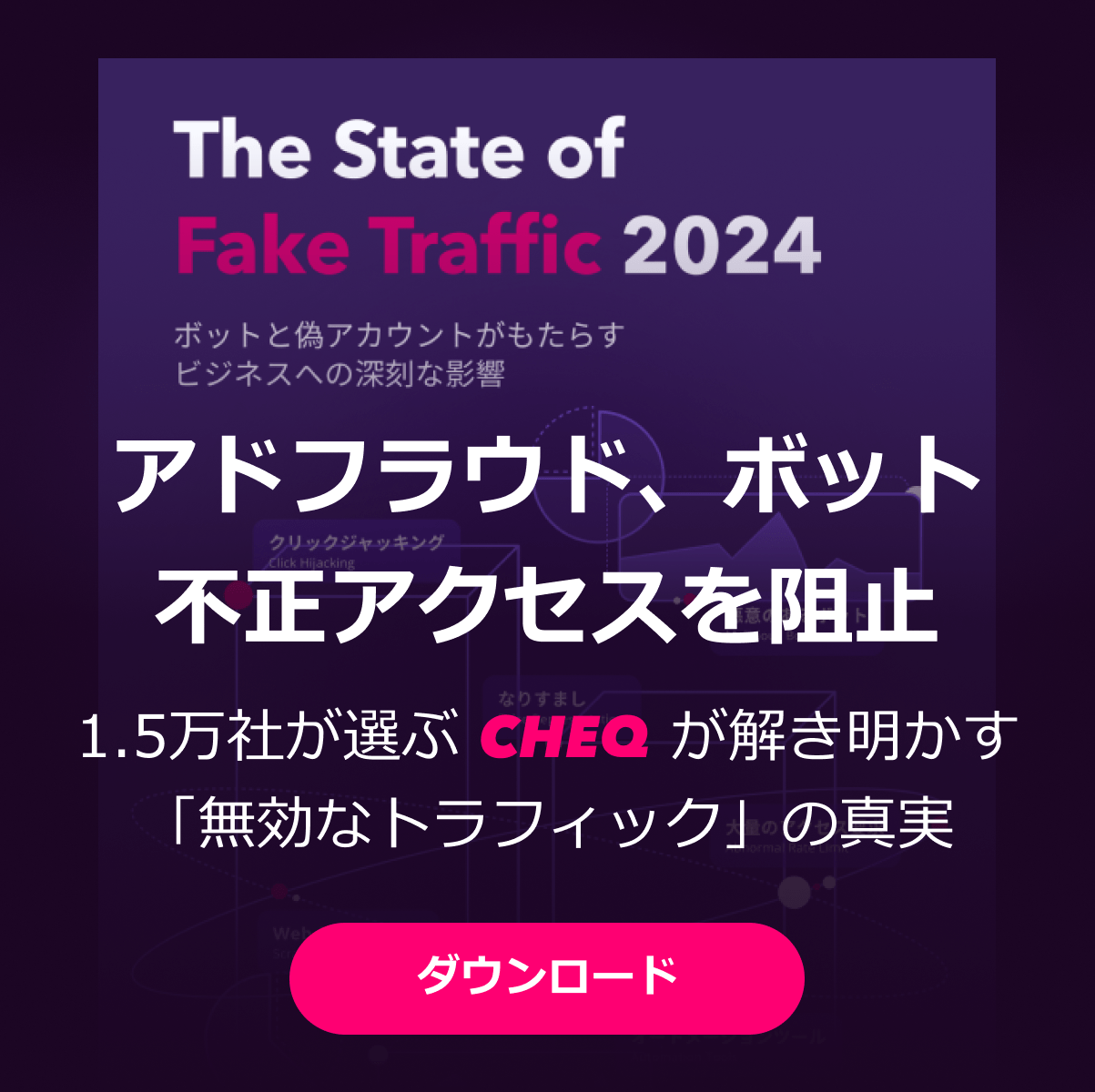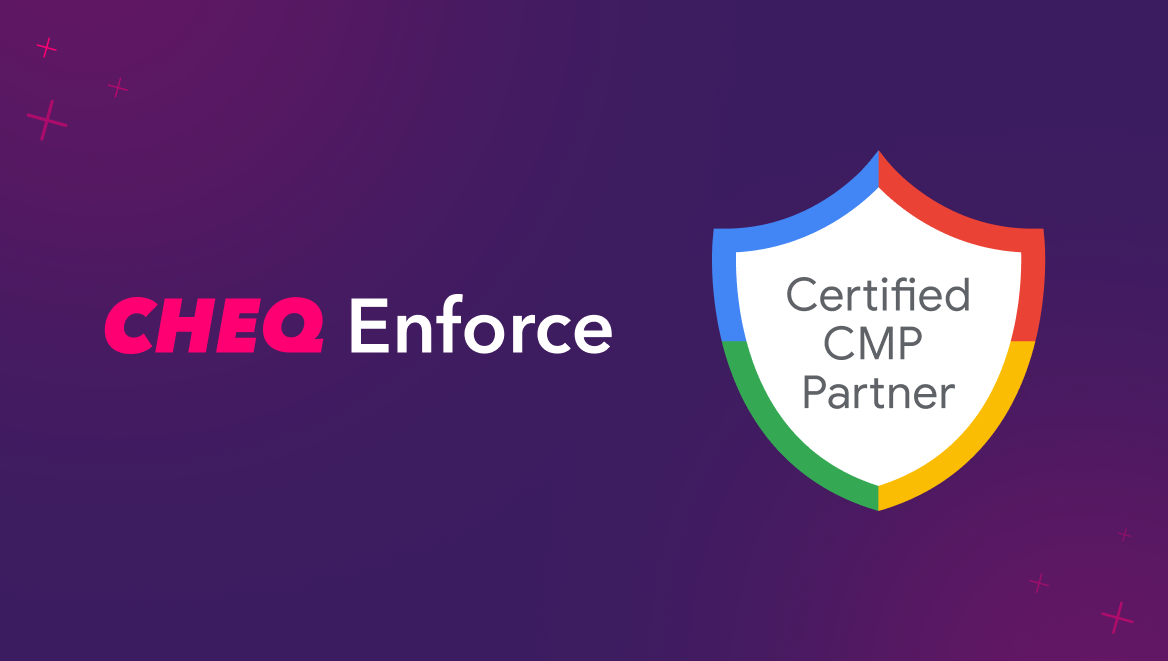The complete digital marketing checklist for SMEs
CHEQ
|Marketing | June 12, 2023

Few things are as diametric as marketing, especially for SMEs. And for many business owners, digital marketing can be a hugely daunting prospect.
Where do you start? How do you stand out from the crowd? What is a digital marketing strategy supposed to look like? Do you even know what you’re doing? These are some of the questions that run through many business owners’ minds.
On the other hand, a digital marketing campaign can also be pretty exciting because it means you can present your products to your audience and start pulling in revenue.
But whether you’re excited or confused at the thought of marketing your business, it’s critical to put a proper marketing plan in place. Launch half-cocked, and you’ll end up wasting money or, worse, driving customers away (and yes, it happens all the time).
That’s why you need a succinct digital marketing checklist that contains everything you need to align before launching.
So first of all… What is a marketing checklist?
What is a digital marketing checklist?
The digital marketing checklist is an overview of different components which a business needs to factor in for a successful strategy. It can cover everything from social media strategy to multiple different methods to promote products or services across multiple digital platforms.
There are multiple things you can add or remove based on your business model.
But in this guide, we will look at the essential elements to help you plan your digital marketing.
The digital marketing checklist essentials
- The marketing plan
- Branding
- Building trust and visibility
- Search engine optimization
- Pay per click (PPC) strategy
- Lead nurturing
- Customer service and after-sales
- Launch and execution
- Monitor results
- Blocking fraud
1. Your marketing plan
Whatever your business, you need to have something to guide your decisions and help you understand your performance: The marketing plan.
You don’t need to have a huge 1000-page document to help you identify what your marketing plan is, either. Quite the opposite. You can put your marketing plan on one sheet of paper and pin it up on the office noticeboard.
So what should your marketing plan look like?
Pre-launch:
- Who is your target market?
- What is your message to that market?
- How will I reach that target market?
During:
- How will I capture leads?
- How will I nurture leads?
- What is my conversion strategy?
After:
- How do I deliver a premium experience?
- How can I increase customer lifetime value?
- How can I generate referrals?
If you haven’t considered all of these elements of your marketing plan, then this can be considered the absolute basic framework for marketing success.
This list is actually taken from the book ‘The One Page Marketing Plan,’ by Allen Dib. A useful read for anyone starting out on their marketing journey.
But to summarize that whole book in one paragraph (sorry, Allen):
Build a solid picture of your ideal target audience; build a funnel to collect their details, whether that is using paid or organic methods; and then have a strategy of increasing business through positive feedback and referrals.
2. Your branding
Branding is a tricky part of the digital marketing checklist because it’s much easier said than done. It also doesn’t yield any direct sales in the short to medium term. But if done right, it can yield long-term dividends.

A great place to start with branding is ensuring that your name, logo, and brand identity appear on all your customer touch points. This doesn’t mean you need to “invest” thousands in a rebrand.
The critical factor here is to ensure that customers know who they are interacting with whenever they come across your website, receive an email, or encounter your business. Great places to start will be your email signature, website, and any packaging you send out.
Nailing your branding probably won’t bring in revenue on its own; you’ll actually need to be extra careful to make sure it doesn’t drain your bank account. But, it can improve the ROI on all your other digital marketing strategies.
And when you’re dealing with something as dynamic as digital marketing, that extra edge can be everything.
3. Building trust and visibility
Whether you’re working to create a steady stream of potential customers or hoping to open the floodgates, you need to understand how to position your business.
As we’ll see in a moment, there are marketing processes, including content creation and paid advertising, that will generate a steady flow. Although these are full strategies in themselves.
But when it comes to presenting your business to your audience, look at step one and ask yourself:
- Where do my customers look online?
- How can I present my service as a solution to their problem?
- How or when do they make a decision to invest?
Your first instinct here is probably to say, ‘They search Google, and I can present some PPC ads or blog posts to hook in my audience.’
And you’d be partly right.
But for early-stage businesses, or even those looking to step up their marketing, good visibility often comes down to a social media marketing strategy.
Whatever you think of platforms like TikTok, Linkedin, Reddit, Facebook, or Instagram, there is no hiding the fact that this is where the world now goes for much of its information. And chances are this includes your target audience (yes, B2B too).
At least having a page on these social media channels is going to go a long way to marketing success. Whether you post or not is another matter…

But wait… It’s not just social media!
In the world of online scams, your brand isn’t trusted until it is established. So having feedback or testimonials also goes a very long way to winning the trust of your target audience.
Build a process into your conversion funnel to generate reviews, feedback, and testimonials on the platforms customers will most likely check. Whether that’s Google Maps, Yelp, Capterra, or TripAdvisor, aim to up that star rating as part of the marketing checklist.
4. Understand the importance of SEO
SEO, or search engine optimization, is part of your bigger-picture marketing strategy. The reason is that generating consistent organic traffic means that you get ‘free’ website visitors – although the ‘free’ is in quotations because it takes more than just time to get up and running.
With a content strategy and following Google’s SEO best practices, you can build up your search engine ranking and hopefully even increase sales.
As a business marketer, you’re best off focusing on your on-page SEO rather than chasing backlinks. Put very simply – this means focusing on a content plan for your website and worrying about domain rankings and backlinks later.
It’s worth bearing in mind that SEO is a medium to long-term marketing strategy, not just one of the one-off marketing tactics you might try for a bit. According to Semrush, it may take up to 6 months before you start seeing results.
But in exchange for regular organic Google traffic and brand visibility, it’s very much worth investing in.
Here are 7 tips to get you started on your business’s SEO:
- Don’t half-ass it. SEO is hard but rewarding work, and just slapping a few keywords onto the occasional article won’t cut it. Have a plan, target a specific customer search intent, and create a marketing strategy that compounds your content strategy efforts.
- Make sure your website’s user experience is top-notch, from speed to responsiveness. Bounce rates don’t just affect PPC campaigns.
- Focus on your business’ unique offerings. That way, you’ll attract just the right kind of customers.
- Remember that Google rewards quality and informative content, so give your searchers what they’re looking for. And use the Google SEO guidelines to help you ensure you format and present all your information correctly.
- Pay attention to other forms of content marketing, like YouTube videos, social media, and even podcasts, if they make sense for your business. Be careful not to try too many things simultaneously if you’re operating a small time, as you can easily waste energy and resources.
- Like with many marketing efforts, try not to stress too much about the short-term results. Have a plan, stick to it, check back on your performance, and have achievable milestones to help you focus on the goal.
- Understand the power of off-page SEO, meaning backlinks. But also understand that it has a place in your strategy and should not be a focus early on.
5. Create a PPC strategy
A key part of many business marketing checklists is running PPC ads, most often Google Ads. Creating a PPC strategy sounds simple, and at face value, it is. But like everything else in your content marketing strategy, it takes experience and a lot of trial and error to work out what works and what doesn’t.
Having that early marketing plan template in place will help you here as you’re looking to position yourself for optimal results.
Before you even think of running a PPC ad campaign, make sure you have the following in place:
- Keyword research (understand where search intent affects customer conversion potential)
- A clear budget and plan that follows your budget
- A well-optimized website with minimal technical issues
- Excellent landing pages tailored to your search campaigns
- Processes to monitor and optimize your PPC ad campaigns while they’re running
There’s so much more that goes into incorporating PPC ads into your digital marketing campaign, and you shouldn’t expect any substantial results without paying attention to the details. The good news is that we have an exhaustive guide on creating a PPC strategy to guide you.
Another element that affects PPC campaigns is invalid traffic in the form of click fraud. This shockingly common problem affects around 90% of all Google Ads campaigns.
What is it?
Click fraud is the problem of fake or non-genuine clicks on paid links such as search ads or display ads. In 2022, it’s estimated that $81 billion of ad revenue had been lost to fake clicks from bots, web scrapers, competitors and brand haters, and other forms of fake traffic.
Although paid search engine marketing, or SEM, has become an essential part of the marketing process, mitigating fraud also has.
6. Lead nurturing
Whatever strategies you include in your marketing plan, you also need to factor in lead nurturing. What does this mean? It’s simply the process of ensuring that those people who have come into your funnel are given ample opportunity to convert into genuine customers.
So how do you do this?
The most common way to nurture leads is to collect their email addresses or contact details and add them to a mailing list.
How you get those leads might be from either a sign-up form, business cards, or maybe even from an actual sale.
Email marketing is a cost-effective way to stay on top of mind with your customers and prospects. But like every marketing strategy, it’s not as simple as pinging out an email every week or two telling people about your latest product launch or end-of-season sale.

There is obviously an art and a science to creating emails that people both:
- Want to read and…
- Will actually convert after reading
Being able to craft a compelling email template and send out regular emails is often seen as one of the best and most cost-effective ways of generating sales.
Using email marketing tools such as Hubspot, Mailchimp, or Klaviyo is the best way to manage your email campaigns. Many of them also offer free levels, often based on subscriber numbers, so you can get started with minimal outlay and hone your email marketing techniques.
You can use the emails to share useful tips, inform customers of new products and discounts, and even prompt them to shop again.
7. After-sales and customer service
Customer service is another strategy that won’t directly lead to increased sales but can be invaluable in the long run. All it takes is a few negative customer experiences for your brand to lose the trust of your target audience.
But on the flip side, by cultivating a positive experience, you can generate positive feedback and cultivate a cycle of referrals. This is a powerful tool that every small business owner should be working towards as part of their business plan.
It’s a good idea to dedicate time to addressing negative online reviews with a professional approach and chasing quick and amicable resolutions. You can also spread your efforts to other touch points like customer inquiries via phone calls and live chat to reinforce the message that your customers are top of mind.
Another way you can encourage positive feedback is to ask your customer how you did or to ask for their opinions. By doing this, you can direct them to your review pages (for example, Google Maps or Trustpilot). There are software services that handle this part of the customer experience and automate the follow-up and review requests.
8. Launch your marketing campaign
One final pitfall that bears mentioning is waiting until your marketing plan is perfect before launching. This is a dangerous practice because it’ll never be perfect; there are a million other things you can add to your digital marketing checklist.
But, few things move faster than digital advertising; new mediums are being rolled out constantly, and your target market has more options than ever before. The longer you wait, the more you lose.
Launching your marketing campaign as soon as possible is critical for another reason. The sooner you launch, the sooner you can gather valuable feedback, gain analytics data, and modify your approach.
9. Monitor your campaigns
Marketing is very much a hands-on activity. While strategies like PPC ads and email marketing allow you to automate, you do need to keep checking to see how your campaigns are doing and adjusting your approach.
With PPC advertising, you can access your Google Ads dashboard to monitor ad performance and optimize elements such as your cost per click or your keyword targeting.
For search engine campaigns, keeping track of the keywords you’re targeting and watching how these blog posts perform over time will help you identify what does and doesn’t work. There are also methods to integrate conversion tracking on your organic pages, such as blog posts, so keep tabs on these too.
And above all, you’ll need to keep track of your return on ad spend, or ROAS. This goes double if you pay for search engine marketing, social media marketing, and other paid marketing channels.
Take the time to perform a PPC audit every few months to make sure everything is working as planned and to optimize.
As part of their paid campaign monitoring, marketers should also factor in fraud protection and prevention.
What kinds of fraud do we need to be checking for…?
10. Blocking fraud on your website
Keeping track of and blocking fraudulent activity on your website and marketing campaigns is a key element for businesses of all sizes.
Some of the main forms of online fraud include:
- Payment card fraud, also known as carding
- Advertising click fraud, or the process of stealing your ad budget via fake clicks/impressions on ads
- Account takeover, whereby fraudsters access your website to steal customer details and fraudulently order products
- Other malicious acts, such as malware or spam injection that can have a massive negative effect on your website and business operations
Anyone doing business online needs to factor fraud blocking into their marketing checklist.
CHEQ Essentials has been the industry leader in click fraud prevention since 2015. But today, you can also use CHEQ Essentials to block many sources of direct or organic fraud, including carding, account takeover, and more.
Add CHEQ Essentials to your marketing stack with a free trial and see how much fraud is picked up and blocked.
Most of our customers save thousands of dollars every month simply by using CHEQ Essentials.
So if you’ve gone to the effort of creating a winning digital marketing strategy, give it the best chance of success.













